ADVERTISEMENT
Lost cities and structures rediscovered over time
From Pompeii to Gobekli Tepe, here are 10 cities that were lost to history but were eventually unearthed.
Updated:
Published:
Image 0 of 34
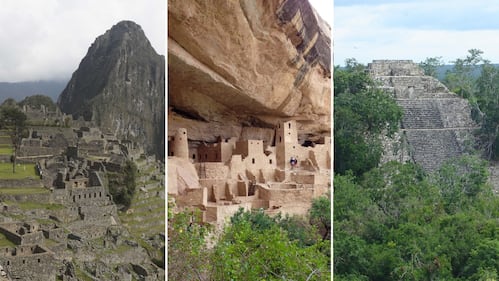
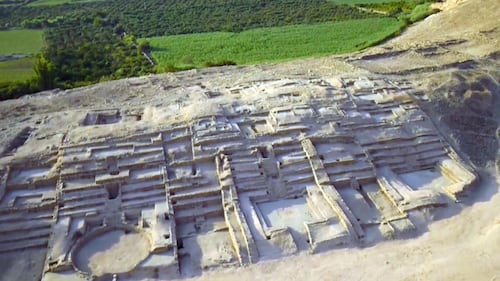
Lost: Unknown
Found: 2025
Archeologists in Peru unveiled a 3,500-year-old city that linked the coast and the Andes.
(Source: Reuters)
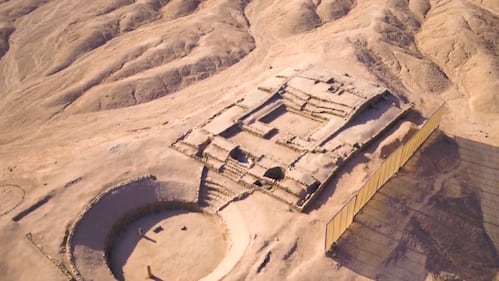
Drone footage released by researchers shows the city centre is marked by a circular structure on a hillside terrace, with remains of stone and mud buildings constructed some 600 metres (1,970 feet) above sea level.
(Source: Reuters)
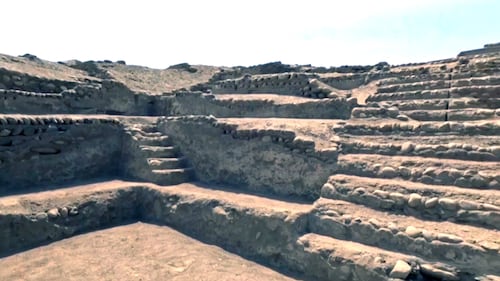
The urban centre, named Peñico, is located in the northern Barranca province and was founded between 1,800 and 1,500 BC. It is close to where the Caral civilization, the oldest in the Americas, developed 5,000 years ago.
(Source: Reuters)
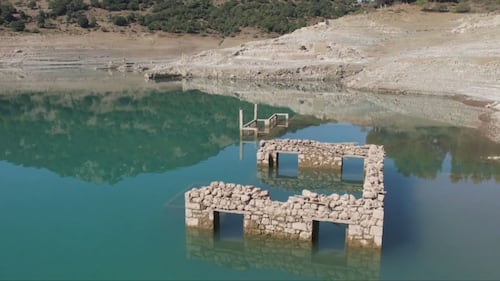
Lost: 1970s
Found: 2024
Like ghosts from the past, sunken villages at the bottom of water reservoirs are not meant to be seen. But the ruins of Kallio in the mountains of central Greece are becoming very much visible — and they have a warning to deliver.
(Source: Reuters)
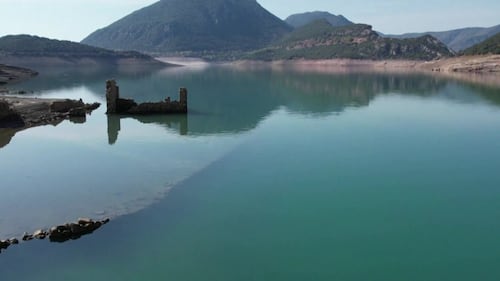
As an unprecedented drought induced by climate change rampaged across much of southern Europe this past summer, reserves at the artificial Lake Mornos — the biggest of the four reservoirs supplying drinking water to Greece's capital, Athens — hit their lowest in 16 years.
(Source: Reuters)
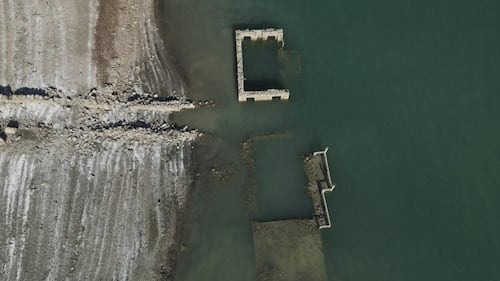
The receding waters exposed what was left of Kallio, a village submerged in the late 1970s to create the reservoir some 200 kilometres from Athens.
(Source: Reuters)
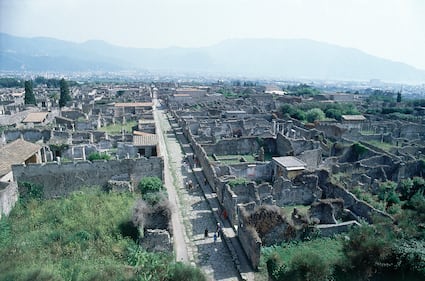
Lost: A.D. 79
Found: 1748
Pompeii was a bustling Roman city until the eruption of Mount Vesuvius in 79 AD destroyed the city and its people overnight.
A view of Pompeii, a buried and ruined Roman city near modern Naples in Italy, is seen in 1979. (AP Photo) (AP)
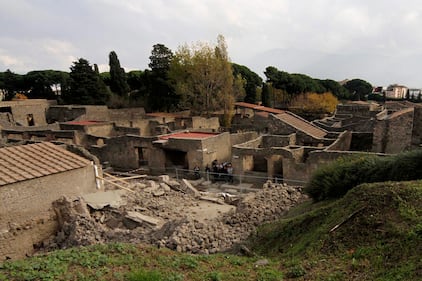
The lost city remained hidden for centuries until its re-discovery in the late 16th century. Excavations of Pompeii took place in the 17th century.
Workers, centre, stand near debris in the ancient Roman city of Pompeii, Italy, Sunday, Nov. 7, 2010. (AP Photo/Franco Castano) (Franco Castano'/The Associated Press)

Located deep in the tropical forest of the Tierras Bajas in Mexico, Calakmul played a key role in the region for more than 12 centuries before it was abandoned.
Calakmul on Oct. 14, 2007. (Source: Community Tours Sian Ka'an / UNESCO) (Salvatore Laporta/The Associated Press)
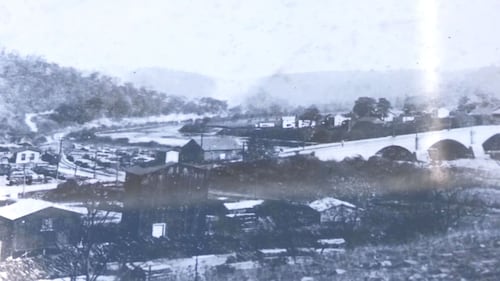
Lost: 1940s
Found: 2024
In 2024, a drought uncovered remnants of a historic town in Pennsylvania that is usually underwater.
The Pennsylvania town of Somerfield was intentionally flooded by a dam in the 1940s. (WPXI-TV)
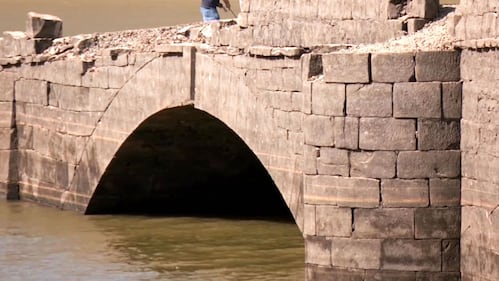
The drought revealed a glimpse of the forgotten town of Somerfield, including what has become the main attraction: the Great Crossings Bridge.
The Great Crossings Bridge was built in 1818 in Pennsylvania. (WPXI-TV)
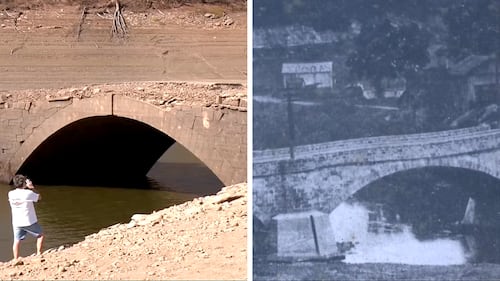
Somerfield was intentionally flooded by a dam to build the Youghiogheny River Lake in the 1940s.
The Pennsylvania town of Somerfield was intentionally flooded by a dam in the 1940s. (WPXI-TV)
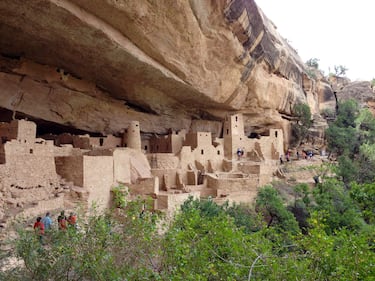
Lost: 1200s
Found: 1889
Researchers have long debated what became of the people sometimes called Ancestral Puebloans, who lived in the elaborate Mesa Verde cliff dwellings and other communities across the Four Corners region, where the states of Arizona, Colorado, New Mexico and Utah meet.
Cliff Palace at Mesa Verde National Park in southwestern Colorado, August 2012. (AP Photo/Margaret Matthews) (Margaret Matthews/The Associated Press)
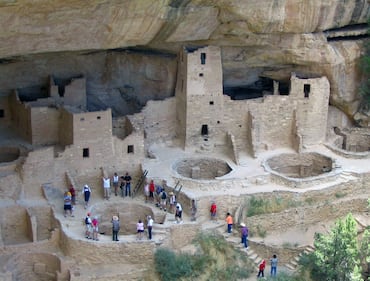
Archaeologists believe the Ancestral Puebloans were a flourishing population of about 30,000 in 1200, but by 1280 they were gone, driven off by a devastating drought, social turbulence and warfare.
Visitors tour Cliff Palace, an ancient cliff dwelling in Mesa Verde National Park, Colo., Aug. 27, 2005. (AP Photo/Beth J. Harpaz) (BETH J. HARPAZ/AP)
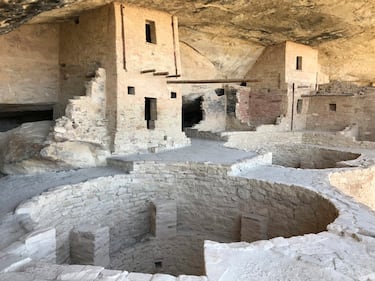
Because they left no written record, their paths are not known with certainty.
Many archaeologists and present-day Pueblo Indians believe the Ancestral Puebloans moved to villages across New Mexico and Arizona, and that their descendants live there today.
Cliff dwellings at Mesa Verde National Park near Cortez, Colo. are captured on May 5, 2018. (AP Photo/Susan Montoya Bryan) (Susan Montoya Bryan/The Associated Press)
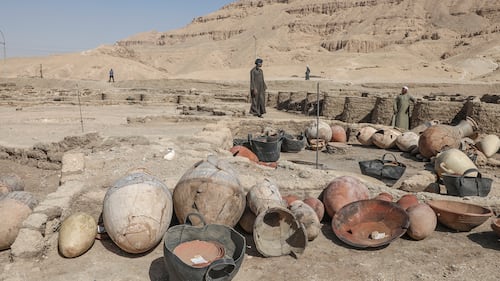
Lost: Unknown
Found: 2021
Egyptian archeologists unearthed a 3,000-year-old lost city in 2021, complete with mud brick houses, artifacts, and tools from pharaonic times.
Workers stand in a 3,000-year-old lost city in Luxor province, Egypt, Saturday, April 10, 2021. (AP Photo/Mohamed Elshahed) (Mohamed Elshahed/AP)
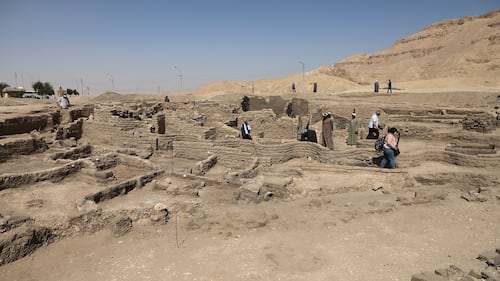
An Egyptian mission had discovered the mortuary city known as ‘Aten’, in the southern province of Luxor.
People stand in a 3,000-year-old lost city in Luxor province, Egypt, Saturday, April 10, 2021. (AP Photo/Mohamed Elshahed) (Mohamed Elshahed/AP)
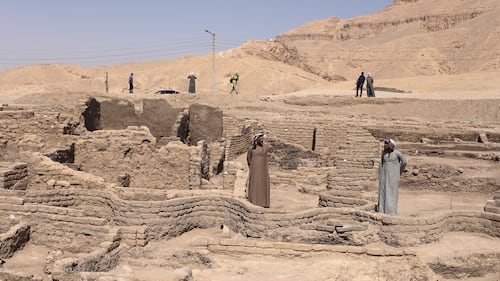
It dates back to what is considered a golden era of ancient Egypt, the period under King Amenhotep III of the 18th dynasty.
People stand in a 3,000-year-old lost city in Luxor province, Egypt, Saturday, April 10, 2021. (AP Photo/Mohamed Elshahed) (Mohamed Elshahed/AP)
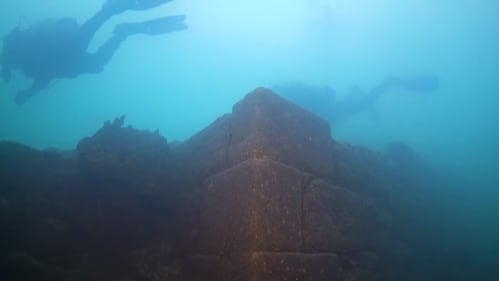
Lost: Iron Age
Found: 2017
Archeologists in Turkiye discovered an ancient fortress half-buried at the bottom of the country’s largest lake, where the alkaline waters have kept the structure well-preserved for approximately 3,000 years.
(YouTube / National Geographic)
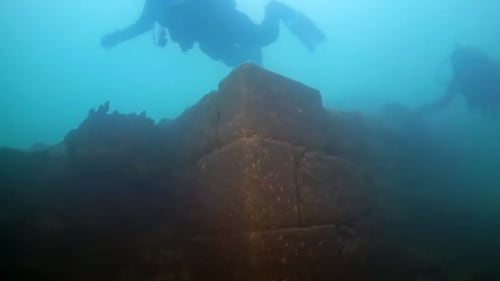
The lost fortress is thought to have been built millennia ago on the shores of Lake Van, back when the Urartu civilization populated that area of the Armenian Highlands.
Water levels have risen by several hundred metres since that time, and the fortress is believed to have been abandoned as a result.
(YouTube / National Geographic)
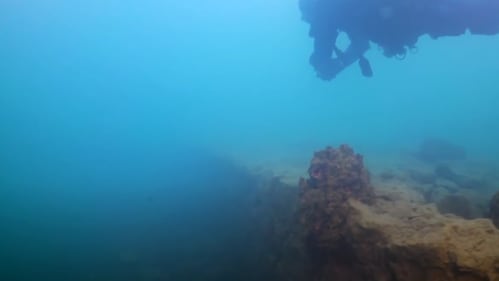
Lost: Iron Age
Found: 2017
Archeologists in Turkiye discovered an ancient fortress half-buried at the bottom of the country’s largest lake, where the alkaline waters have kept the structure well-preserved for approximately 3,000 years.
(YouTube / National Geographic)
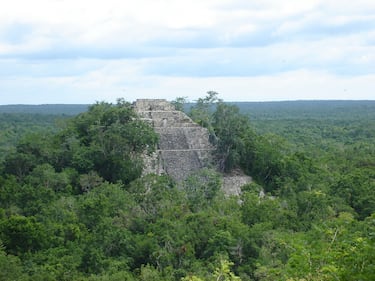
Lost: 700-1000 AD
Found: 1931
Calakmul is one of many lost cities of the ancient Maya civilization that have since been rediscovered.
Calakmul on Oct. 14, 2007. (Source: Community Tours Sian Ka'an / UNESCO)
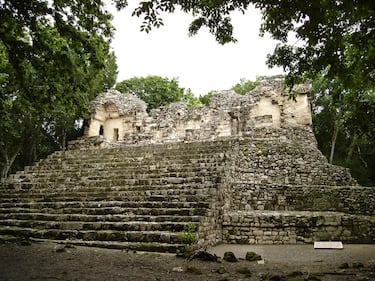
Located deep in the tropical forest of the Tierras Bajas in Mexico, Calakmul played a key role in the region for more than 12 centuries before it was abandoned.
Calakmul on Oct. 14, 2007. (Source: Community Tours Sian Ka'an / UNESCO)

Lost: Iron Age
Found: 2017
Archeologists in Turkiye discovered an ancient fortress half-buried at the bottom of the country’s largest lake, where the alkaline waters have kept the structure well-preserved for approximately 3,000 years.
(YouTube / National Geographic) (Ko Hon Chiu Vincent)
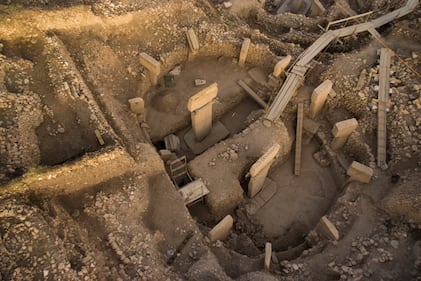
Lost: Iron Age
Found: 2017
Archeologists in Turkiye discovered an ancient fortress half-buried at the bottom of the country’s largest lake, where the alkaline waters have kept the structure well-preserved for approximately 3,000 years.
(YouTube / National Geographic) (G�bekli Tepe Project)

Lost: Iron Age
Found: 2017
Archeologists in Turkiye discovered an ancient fortress half-buried at the bottom of the country’s largest lake, where the alkaline waters have kept the structure well-preserved for approximately 3,000 years.
(YouTube / National Geographic) (N. Becke)
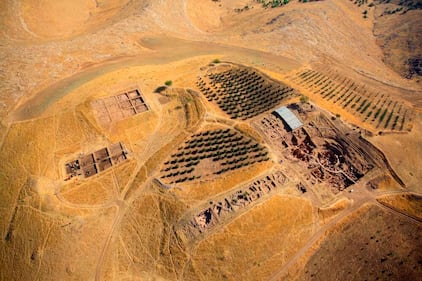
'The communities that built the monumental megalithic structures of Göbekli Tepe lived during one of the most momentous transitions in human history, one which took us from hunter-gatherer lifeways to the first farming communities. The monumental buildings at Göbekli Tepe demonstrate the creative human genius of these early (Pre-Pottery Neolithic) societies.' (UNESCO)
Aerial view of Gobekli Tepe in 2013. (Source: Göbekli Tepe Project / UNESCO)
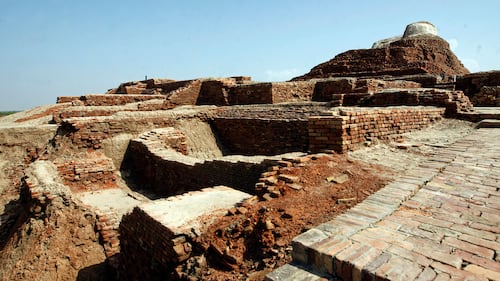
Lost: 1900 BC
Found: 1922
The ruins of Mohenjo Daro are considered among the best-preserved urban settlements in South Asia.
Ruins at Mohenjo Daro, a UNESCO World Heritage Site, in Mohenjo Daro, suffered damage from heavy rainfall, in Larkana District, of Sindh, Pakistan, Tuesday, Sept. 6, 2022. (AP Photo/Fareed Khan) (Fareed Khan/AP)
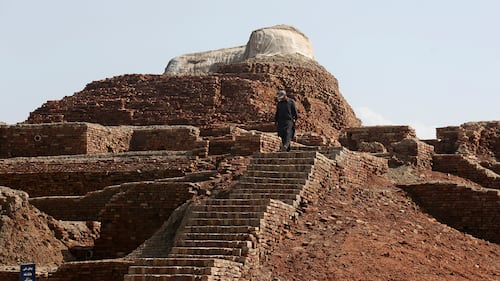
To this day, mystery surrounds the disappearance of its civilization, which coincided with those of ancient Egypt and Mesopotamia.
Ruins at Mohenjo Daro, a UNESCO World Heritage Site, in Mohenjo Daro, suffered damage from heavy rainfall, in Larkana District, of Sindh, Pakistan, Tuesday, Sept. 6, 2022. (AP Photo/Fareed Khan) (Fareed Khan/AP)
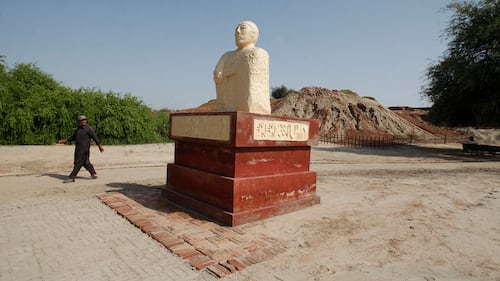
Only a small portion of the site has been excavated properly, but the most important building appears to be a massive public bath.
Houses had tiled bathrooms and their own cylindrical brick wells, sometimes raised to the second floor to allow for a flush system.
A Pakistani man walks in Ruins at Mohenjo Daro, a UNESCO World Heritage site, that suffered damage from heavy rainfall, in Larkana District, of Sindh, Pakistan, Tuesday, Sept. 6, 2022. (AP Photo/Fareed Khan) (Fareed Khan/AP)
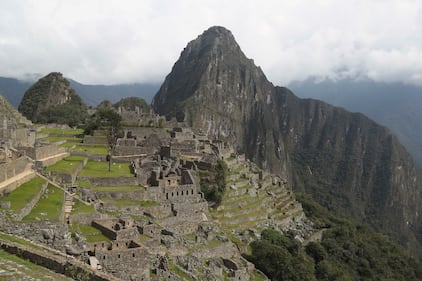
Lost: 15th century
Found: 1911
According to archaeological studies, Machu Picchu was built by the Incas in the 15th century as a religious sanctuary high in the Andes Mountains.
The Machu Picchu archeological site is devoid of tourists while it's closed amid the COVID-19 pandemic, in the department of Cusco, Peru, Oct. 27, 2020. (AP Photo/Martin Mejia) (Martin Mejia/AP)
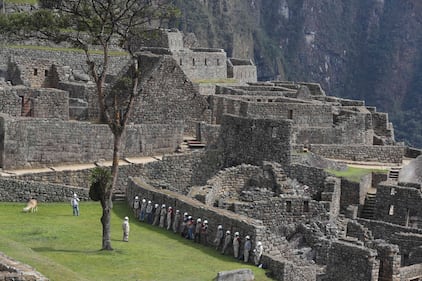
The site was eventually abandoned for reasons unknown and went undetected in the jungle for centuries until it was re-discovered in the 1900s.
The Machu Picchu archeological site is devoid of tourists while it’s closed amid the COVID-19 pandemic, in the department of Cusco, Peru, Tuesday, Oct. 27, 2020 (AP Photo/Martin Mejia) (Martin Mejia/AP)
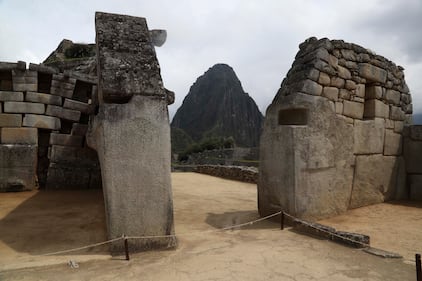
Today, Machu Picchu is a famous UNESCO site, visited by tourists around the world.
The Machu Picchu archeological site is devoid of tourists while it’s closed amid the COVID-19 pandemic, in the department of Cusco, Peru, Tuesday, Oct. 27, 2020 (AP Photo/Martin Mejia) (Martin Mejia/AP)